GLASSWARE AND EQUIPMENT ALTERNATIVES
Below is a list of glassware alternatives to help you serve the best looking and tasting cocktails you can at home, without having to buy a brand new cabinet of crystal, we’ve summed up a few of the most common cocktail glasses, why we use them, and what alternatives you might be able to find in your cupboard.
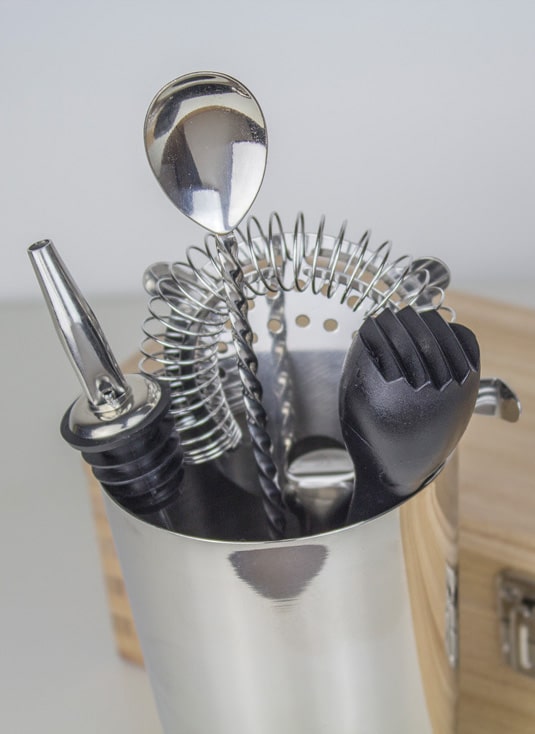
Cocktails are often tailored around the glass they’re served in—a martini glass is the perfect container for an elegant, straight-up (served without ice) cocktail; the low volume and large area of the bowl allow for maximum looks, the wide rim gives a fuller aroma when the drinker goes in for that sip, and the stem stops their hands from warming the drink while they’re holding it—but most homes are unlikely to have the large and varied glassware selection you’ll find on the shelves of the average cocktail bar. When making cocktails at home all you really need is a watertight container, if a drink is good enough it will taste great out of anything, but the right glass can enhance your drinking experience and give your homemade cocktail that professional edge.
Martini Glasses
Let’s start with the aforementioned martini glass, sometimes referred to simply as a ‘cocktail glass’ thanks to its iconic look and widespread use. This design classic comes in a few forms, traditionally it is made up of a wide foot or base, a long, thin stem and a wide, shallow, conical bowl. Perhaps more popular now though, is the coupette; a similar glass with a slightly shorter stem and a wide, shallow, rounded bowl. Sometimes known as a champagne coupette or ‘coupe’, this glass was originally intended to contain sparkling wine but the wide brim means the liquid dissipates faster and goes flat quicker than if it were in a narrower glass, hence the more widespread use of the ‘flute’ glass for champagne these days.
The coupe’s elegant shape and structural soundness when compared to the more traditional, angular martini glass mean that it’s become the go-to glass for many bars when it comes to their martini-style cocktails. The coupette’s distinctive shape is reputed to be based on the dimensions of Marie-Antoinette’s breast, whilst this certainly makes for a titillating detail, sadly there’s not much to support this theory.
As mentioned, there’s a few reasons to go for a martini-style glass, the drinks served in them are usually served straight up, which means without any ice, these short strong cocktails are usually made of just a few shots so they only need a relatively small volume to contain them, the wide brim though, increases the aroma, ultimately improving the taste, and the long stem allows the drinker to hold the glass without warming the drink with their body heat.
The stem and the low volume are the elements you want to try and prioritise here, a small wine glass or a champagne flute work brilliantly, if you don’t have anything like that a small water glass or even a fine teacup will do fine in place of a martini glass. There’s nothing wrong with serving your martinis in something larger, but with their relatively short stature they might look a little dwarfed in a bigger glass.
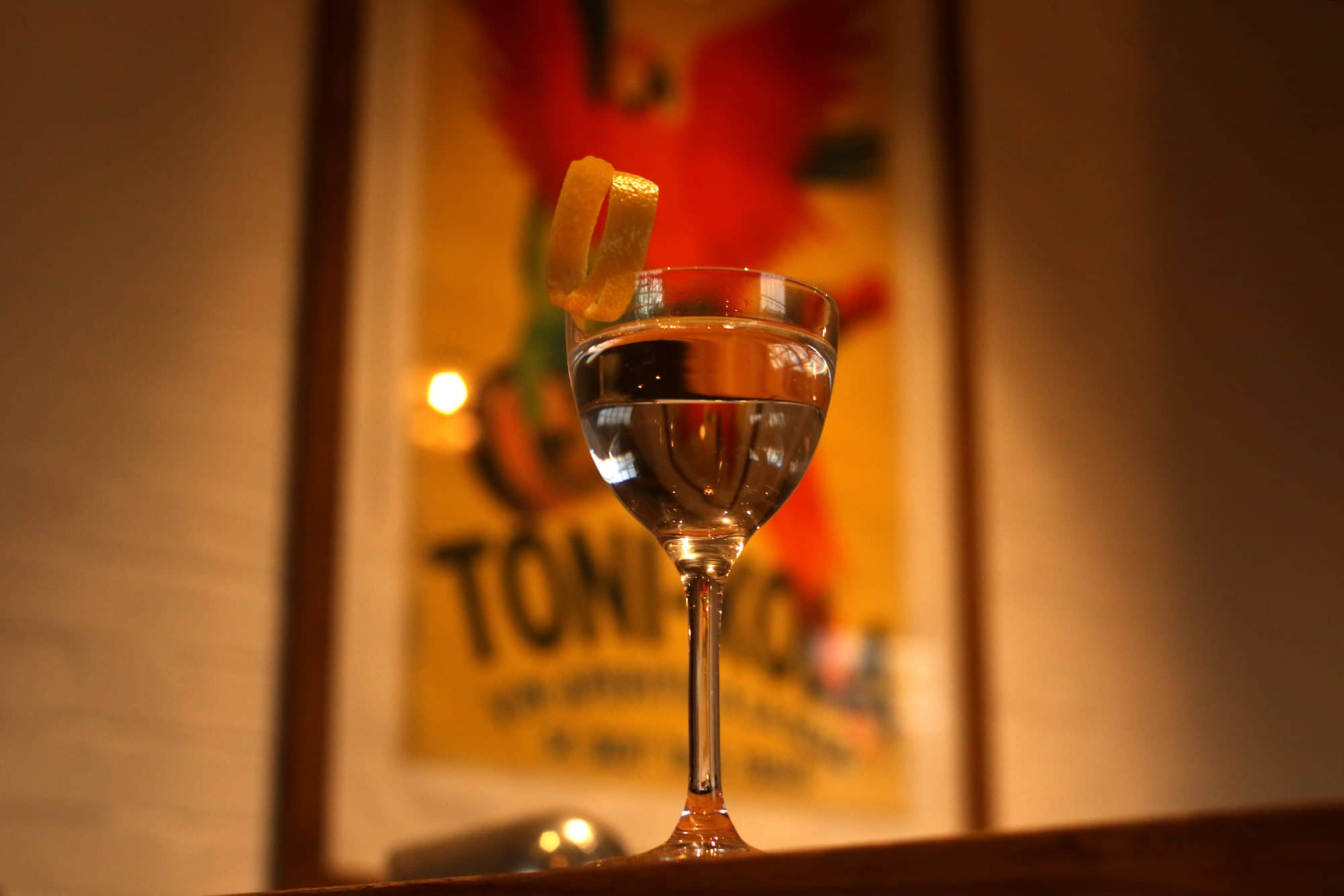
Rocks Glasses
The rocks glass or the old-fashioned glass is a simple, short, wide-brimmed, heavy-bottomed tumbler, these squat glasses make the perfect vessel for short cocktails served on the rocks (with ice). Again, the wide brim makes for optimum aroma and the broad, straight-walled shape allows for maximum ice with minimum surface area contact with the drink.
This is probably the easiest glass to replicate at home as most of us already have something like this in the cupboard. The important elements here are the width, the flat bottom and the straight walls, this is particularly important for a stirred drink that may be made in the glass, such as a Negroni or an Old Fashioned. Some good alternatives though would be a medium sized wine glass, a half pint glass or even a mug.
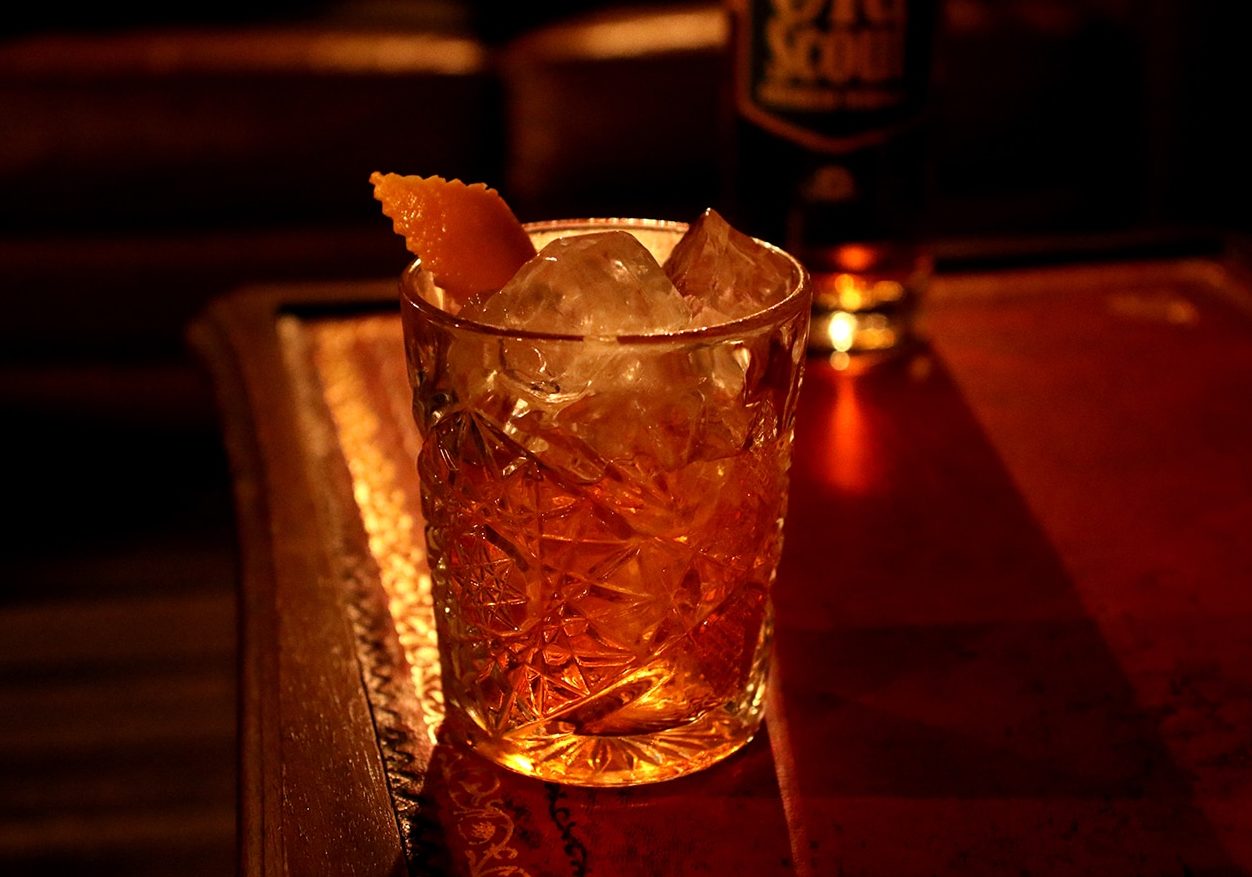
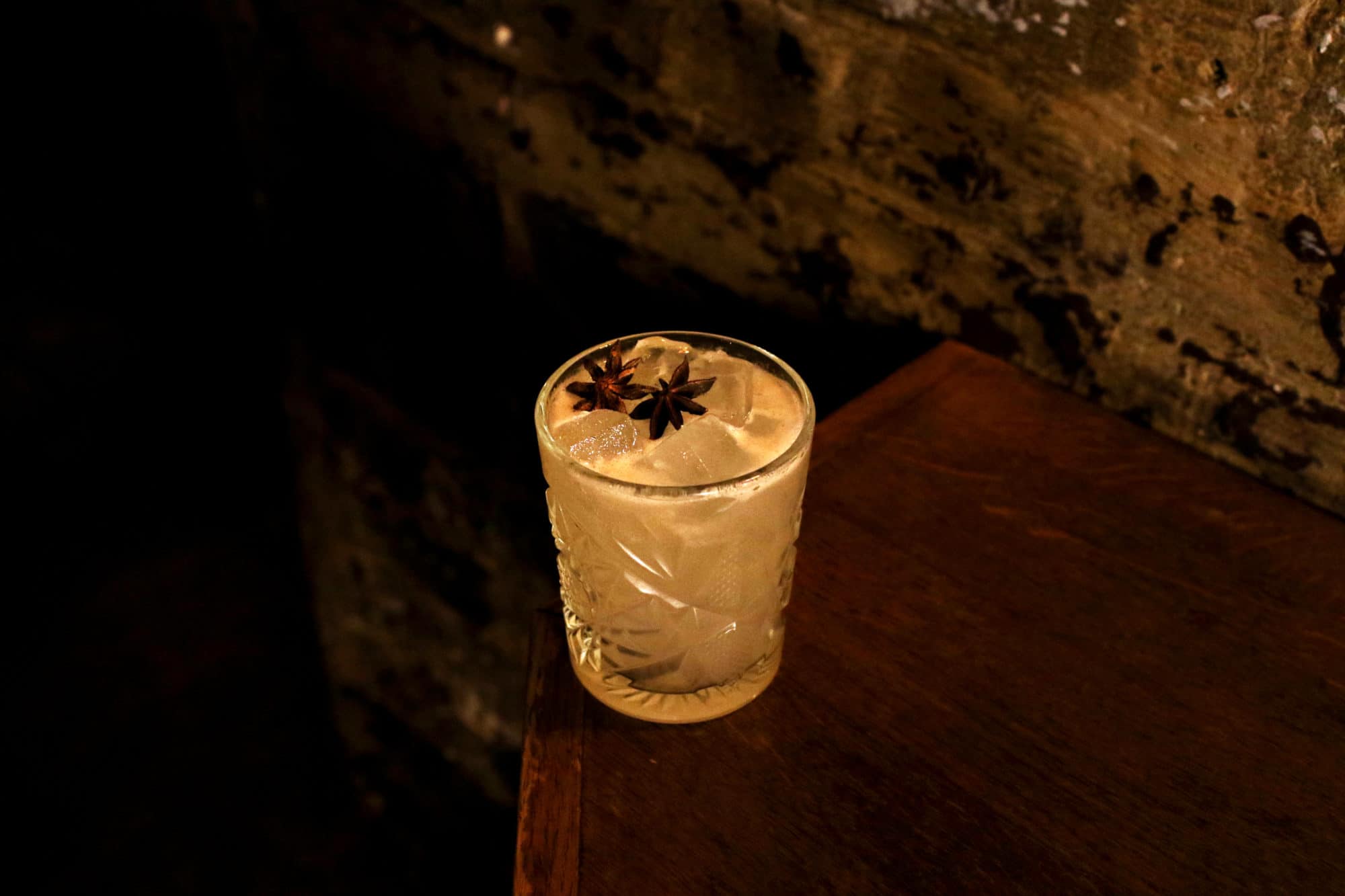
High Balls
High balls or Collins glasses are any tall, straight, stemless glass. These glasses generally hold a larger volume than a rocks glass and their height and narrowness make them excellent for cold, fruity drinks served with a straw that often contain a greater volume than stronger drinks, for drinks containing a carbonated element as they slow the dissipation of the bubbles keeping the drink fizzier for longer, and for built drinks that use crushed ice, as the shape reduces the surface area of the ice exposed to the air.
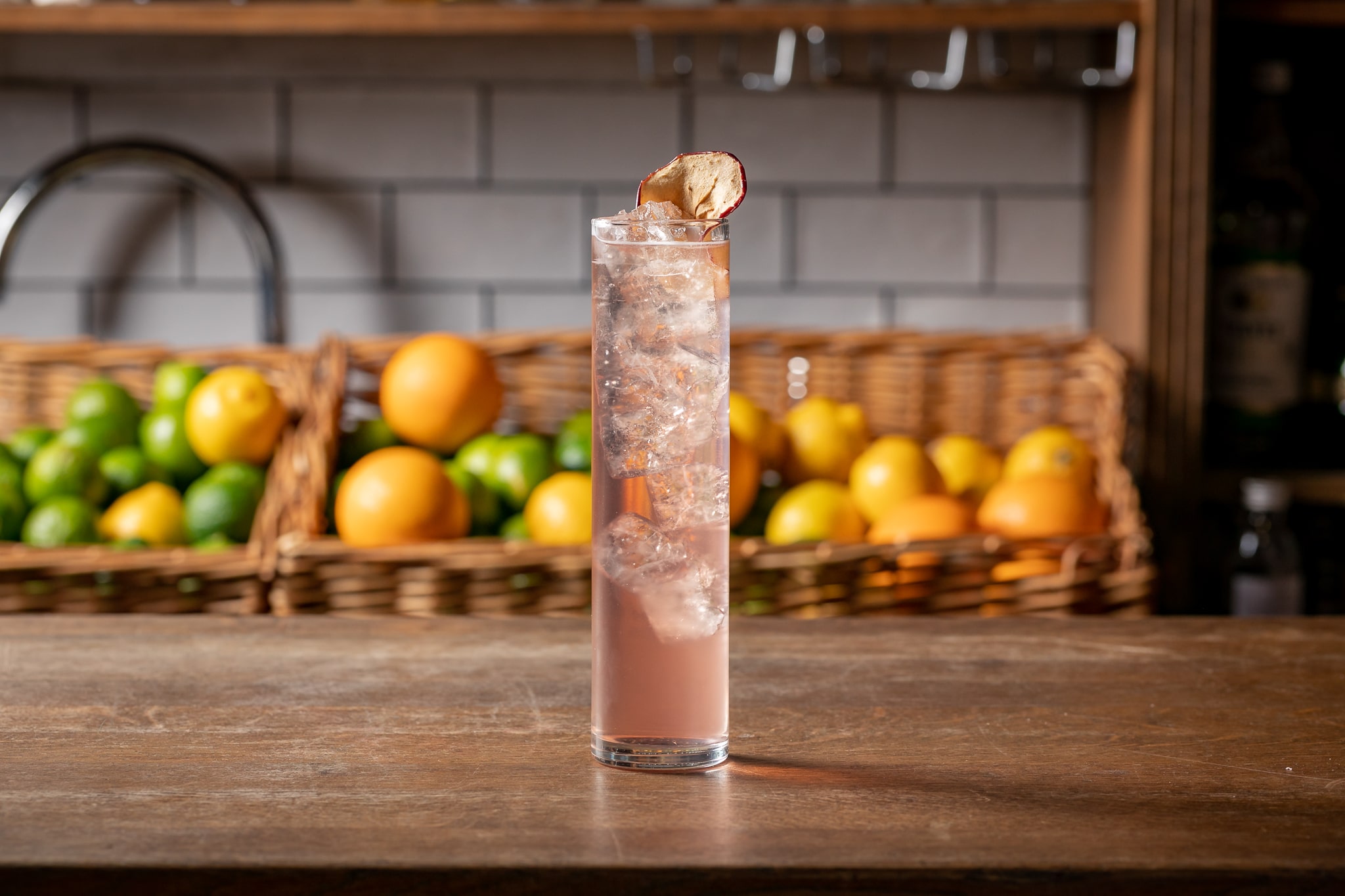
Again, most of us probably have something like this in the cupboard already but in terms of alternatives, anything with a similar volume will do great, some options include a large wine glass, a pint glass, a stemmed beer glass, a chunky water glass or a giant Sports Direct mug.
Julep Tins and Tiki Mugs
Less essential or widespread than the others, these are a couple of glasses you might come across in some more specialist recipes.
Julep tins—named for the drink they most often carry: a Julep—are medium sized metal cups often made of silver, copper or stainless steel. The drink they are designed for is a built (made in the glass) cocktail using crushed ice. The metal cup quickly conducts the temperature, becoming ice cold and developing a frost on the outside, this makes a drink that’s aesthetically pleasing and distinctly cooling in hot weather. A pewter tankard, an enamel mug or even a cleaned out baked bean tin (Heinz only please) make great alternatives, the use of the metal cup though, is a mostly superficial choice and serving this type of drink from a similarly sized glass or mug won’t have any adverse effects on the contents. As this drink is built in the glass you don’t want anything too delicate, in terms of alternatives a mug is perfect, and a chunky water glass, a sturdy, medium wine glass or a high ball will do just fine.
Tiki glasses come in various shapes and sizes and again, are all about the looks. Designed to contain fun, over-the-top, tropical, fruity concoctions, these glasses often take their inspiration from the faux-polynesian themes that surround tiki-culture. They tend to be large, ornate glasses, made of thick glass, ceramic, plastic or even wood. They often have intricate carvings and moldings on the outside to make them resemble tiki masks or animals. Some good alternatives to a tiki mug would be a plant pot (without holes) a child’s welly boot or a gravy boat. Or just a big glass.
With some form of these glasses on hand you’ll be ready to serve pretty much any style of cocktail you try your hand at making, but even if you’ve only got one of them don’t let that stop you mixing drinks, after all, the important bit is what goes in the cocktail not what the cocktail goes in.
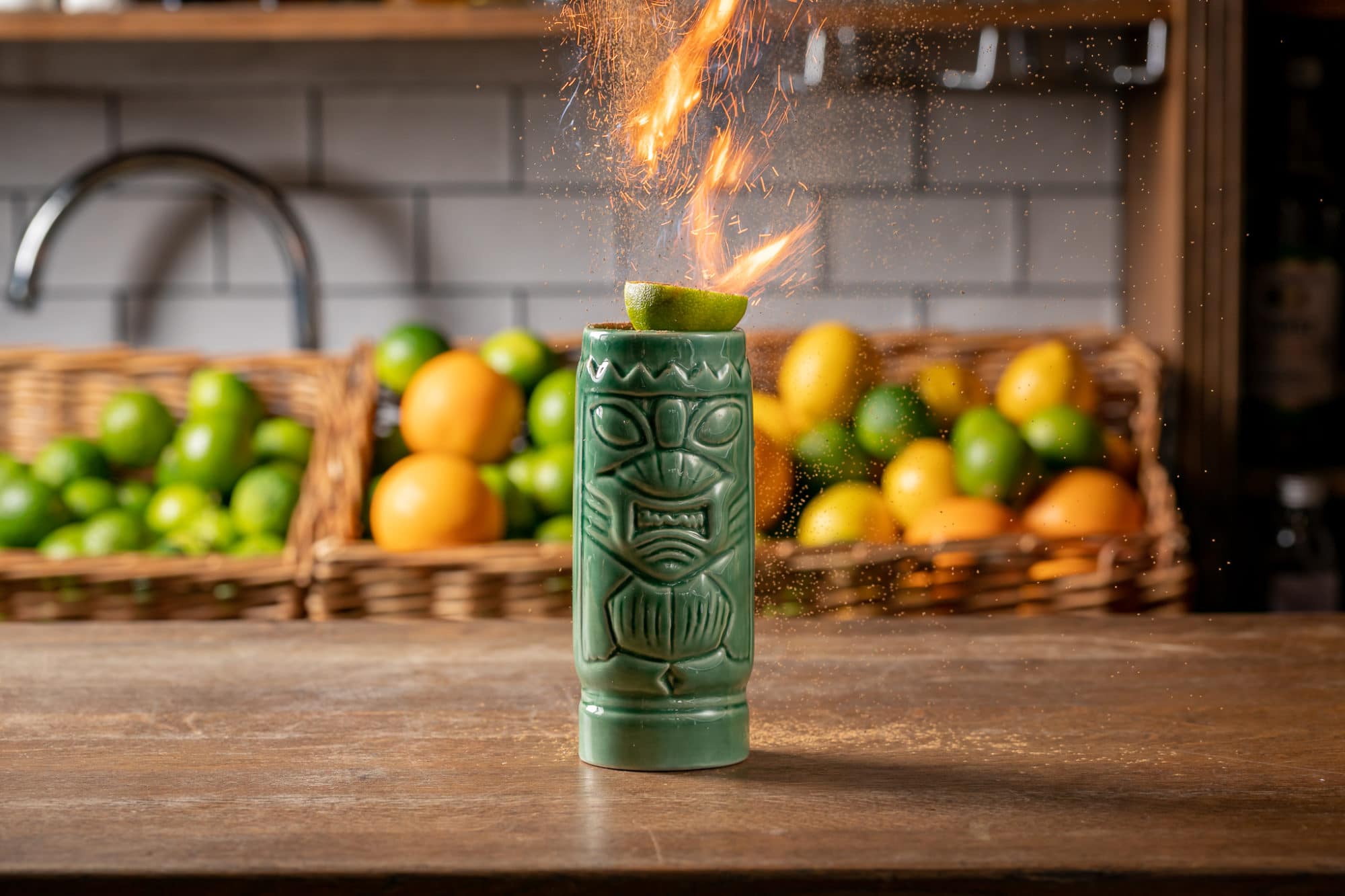
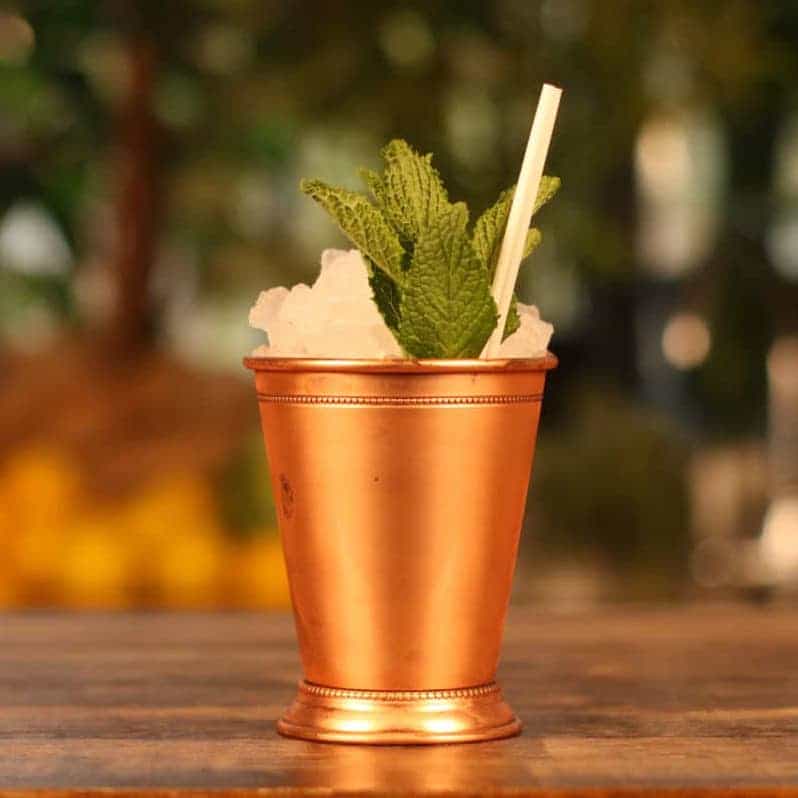
Equipment
So you’ve raided the cabinet for every unique glass you can find, you’ve gathered the remains of every bottle of booze you’ve ever been given as a christmas gift or bought for a party and you’re ready to start mixing some masterful cocktails in your kitchen. But every recipe is calling for shakers, strainers, jiggers and other bits that even the most well equipped kitchen would be forgiven for lacking. So short of dropping a ton of cash on a bespoke barware set or trying your luck in the TK Maxx homeware section, how are you gonna mix that Margarita?
Fear not, budding bartender, just like the glasses, you can find equivalent cocktail equipment in most kitchens, and we’ve compiled some alternatives to some of the more commonly used bits of kit so you can get mixing right away.
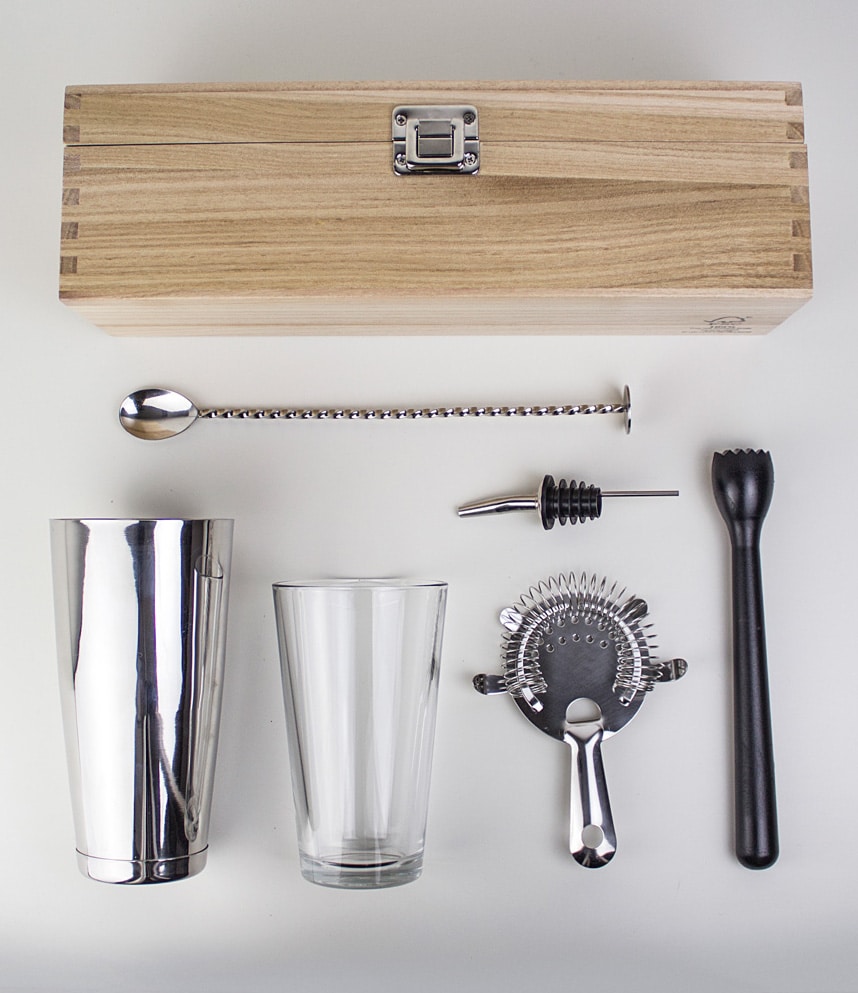
Shakers
The quintessential bit of cocktail kit and the piece integral to the majority of recipes, the cocktail shaker comes in a range of shapes, sizes and materials. There are a couple of styles of shaker you might come across, namely, Boston shakers, which are the big two-piece shakers most commonly consisting of a toughened glass and a large tin, and Cobbler shakers which are the classic, three-piece, metal shakers with a built in strainer.
There are some other, less prevalent styles of shaker, and whilst every style has its own pros and cons, in general they are pretty interchangeable.
When looking for alternatives to a cocktail shaker at home you really just need a container large enough to hold your drink as well as an equivalent volume of ice, that can be sealed and opened again.
Some great options are a tupperware box, the cup of a smoothie-maker, a mason jar or even an old drinks bottle, just make sure you can get the ice cubes in there, Oasis bottles work a treat.
Strainers
The loyal perforated partner to the shaker’s sheriff, the strainer goes hand in hand with the shaker, sometimes even being built into its structure (see cobbler shakers). This simple, self-explanatory bit of kit keeps the ‘dirty’ or used ice in the shaker and lets the drink out into the glass.
Just like shakers, there are a few different styles of strainer used in cocktail making, from the Hawthorne strainer; a flat disc with a handle and a spring around its edge to keep it in the shaker, to the Julep strainer; a large shallow bowl with a short handle filled with holes, like a cross between a spoon and a colander; and the fine strainer or tea-strainer, which is often used in conjunction with one of the former and is essentially just a small sieve. And, just like their shaky counterparts, they all have their own benefits and drawbacks but at the end of the day, they all perform the same basic task: filtering the ice and pulp from a shaken cocktail before serving. This is a pretty simple function to replicate and one that can even be skipped altogether in a lot of instances.
There are a few reasons we strain cocktails; in the case of something clear and smooth like a Martini or a Manhattan, to get the best look and texture we strain any ice chips out of the cocktail before serving; with drinks that contain egg white, like a Whisky Sour or a Clover Club, the best result is achieved by shaking twice, once with ice and once without, so the strainer is important for getting rid of the ice after the initial shake; and for cocktails that contain fresh juice, straining helps to get rid of any seeds or pulp that might be in the drink. In the latter two cases, not straining your drink won’t be the end of the world, there’s nothing wrong with pulpy Daiquiri, in fact some people even prefer it that way, and you can still achieve a pretty respectable head in an egg white drink with a single shake, just make it extra vigorous. Even a Martini or a Manhattan served on the rocks is still a decent cocktail, but if you’re determined to strain at home there’s a bunch of things you can repurpose for the task.
With some careful pouring a regular sieve or colander can work just as well as a cocktail strainer, as can a skillfully positioned fork, you can also try using the lid of your shaker to help strain your drink, or if it’s only you who’s gonna be drinking it and you don’t mind getting a bit sticky, even your hand will suffice in a pinch.
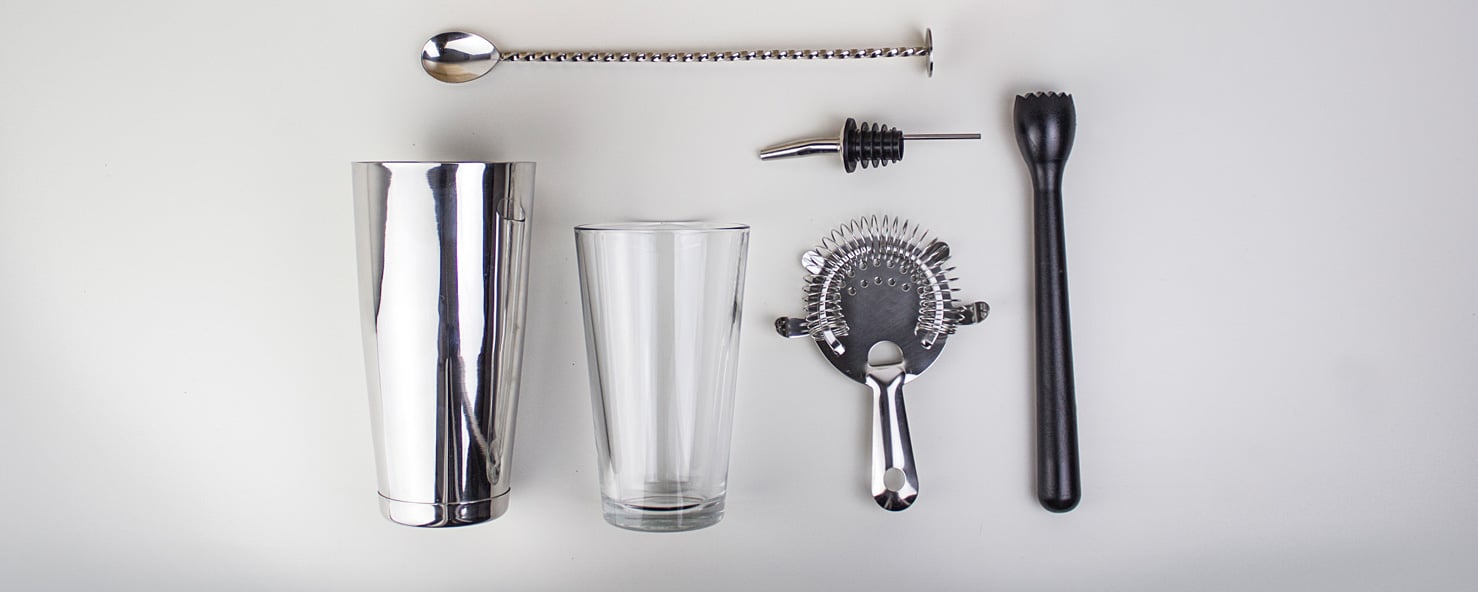
Jiggers/Measures
A measure or a jigger is another simple but essential piece of the cocktail bartender’s repertoire, a standardised measurement, usually a shot, whose exact volume varies depending on its country of origin. This is important to cocktail making because the delicate composition and flavour of most cocktails is reliant on the ratios of their ingredients. What’s important here though, is the ratio rather than the exact amount, So long as you are using the same measure for all your ingredients you should end up with a balanced cocktail.
Some good tips to remember are that a lot of recipes are listed in milliliters or fluid ounces, in these instances a shot is generally 25ml or 1fl.oz (roughly 32ml) with 12.5ml or 1/2fl.oz referring to half a shot. With this in mind anything close to a shot (an eggcup, a novelty shot glass) can be used to make a cocktail, just use its full volume for a shot and roughly half for half a shot. If you’re set on getting the exact measurements though you can work off the assumption that a tablespoon is roughly 15ml.
Barspoons
A bar spoon is a spoon with a 5ml bowl and a long, often spiralling handle. The standardised volume allows the spoon to be used as a measuring tool and the long thin handle makes it optimal for stirring drinks. As you can imagine this is a pretty easy bit of kit to emulate, all you really need is a spoon. Ideally a teaspoon with a long handle like the kind used to eat a knickerbocker glory would be best, but in all honesty any spoon or similar stirring device will suffice—a chopstick, a knife, a clean finger, etc.
Muddlers
Muddlers are short batons usually made of wood or plastic, though they can be made from pretty much any hard material, they usually have a flat or ridged end which is used to mash or ‘muddle/ fruit and other solid ingredients in the bottom of a glass or shaker when making a cocktail.
This bit of kit isn’t quite as essential as the others and only a select few recipes will require its use, if you find yourself needing one though, there are a bunch of things you can use instead. Basically you just want something solid and relatively flat that you can use to mash some fruit; the end of a rolling pin, the pestle from a pestle and mortar or a particularly robust carrot will do a fine job in place of a muddler.
Mexican Elbows/Juicers
These are really handy bits of kit that prove their worth in the kitchen beyond mixology, but once again they’re easily forgone if necessary. A Mexican elbow is a hinged pair of interlocking bowls with long handles and holes in the lower half. This bit of equipment makes short work of halved lemons or limes, pressing all the juice out quickly and efficiently and without letting any seeds through.
If you don’t have one though, most citrus fruits can easily be squeezed by hand or with a standard juicer. For easier squeezing cut your lemons and oranges into quarter wedges and your limes in half and in each case, roll the fruit firmly on a flat surface before cutting to loosen the flesh and make it easier to juice.
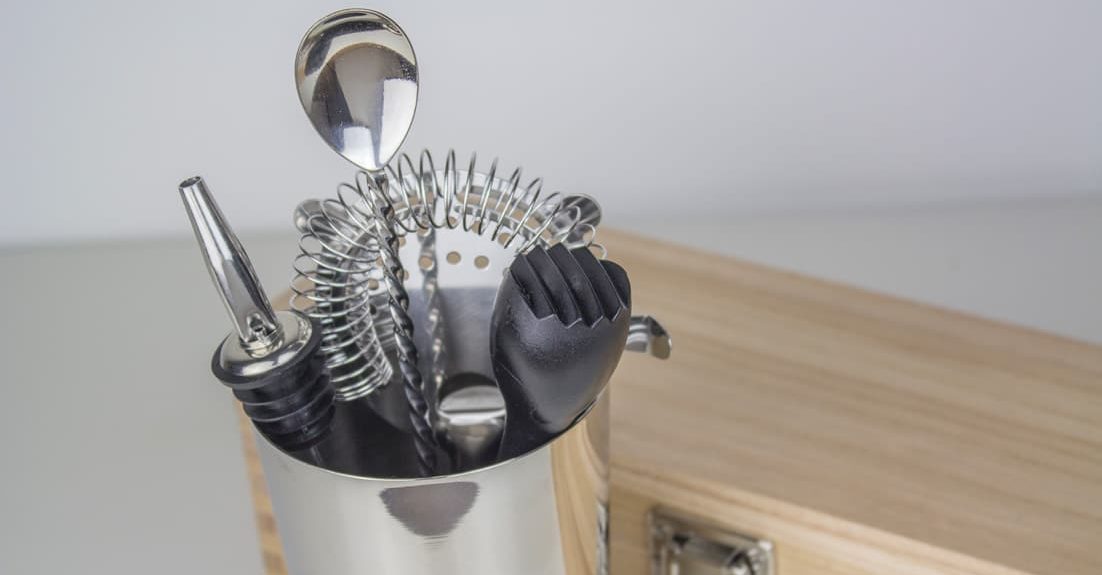
Hopefully with the help of this guide, a little imagination and some MacGyver style ingenuity, even the most ill-equipped home mixologist will be able to make some passable cocktails from the comfort of their kitchen.
